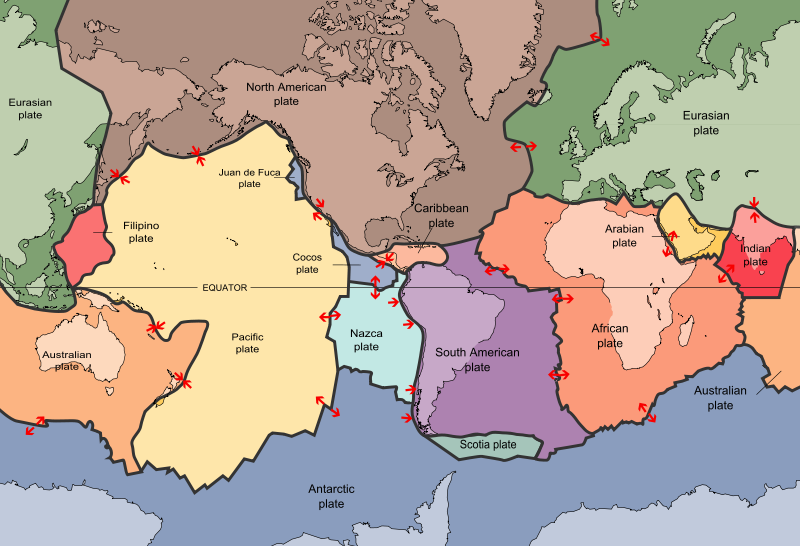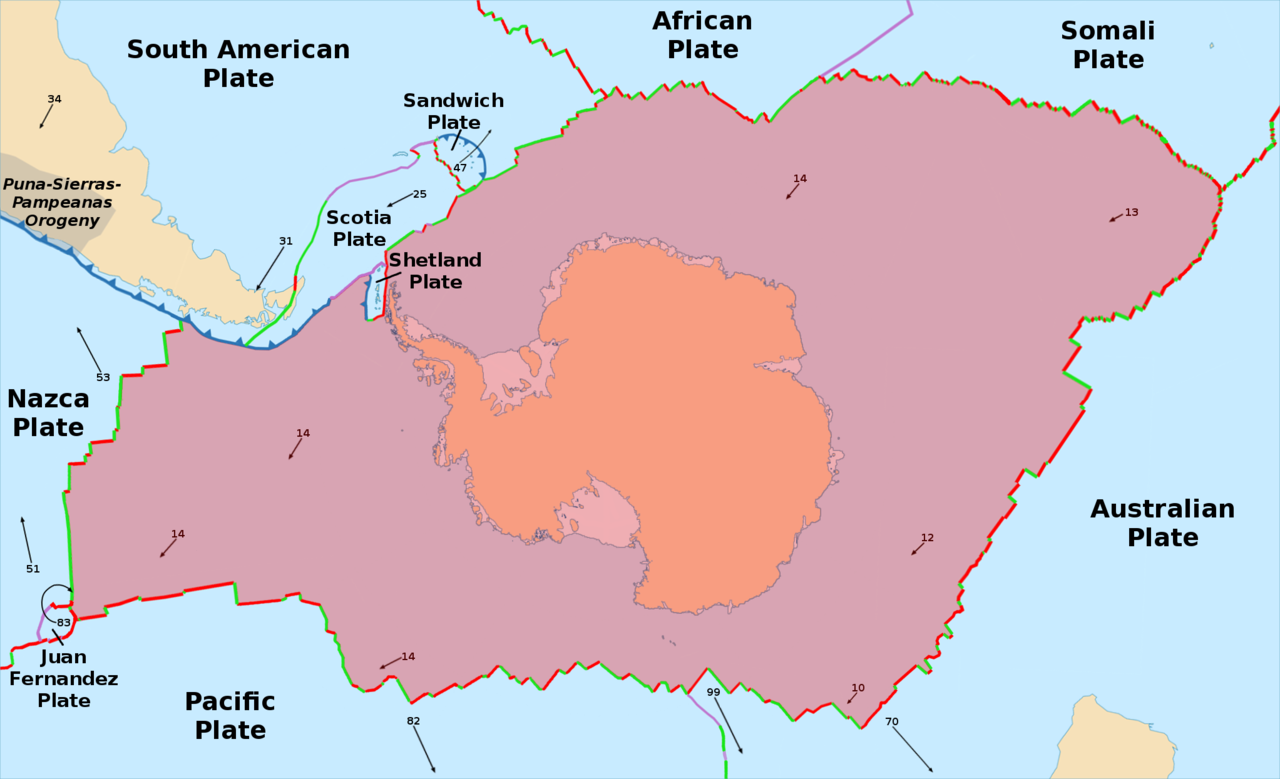<Back to Index>
- Tectonic Plate Antarctic Plate
PAGE SPONSOR


The Antarctic Plate is a tectonic plate covering the continent of Antarctica and extending outward under the surrounding oceans. The Antarctic Plate has a boundary with the Nazca Plate, the South American Plate, the African Plate, the Indo - Australian Plate, the Scotia Plate and a divergent boundary with the Pacific Plate forming the Pacific - Antarctic Ridge.
The Antarctic plate is roughly 60,900,000 square kilometers. It is the fifth biggest plate in the world.
The Antarctic plate movement is estimated at least 1 centimeter/per year towards the Atlantic Ocean.
The Antarctic Plate started to subduct beneath South America 14
million years ago in the Miocene epoch. At first it subducted only in
the southernmost tip of Patagonia, meaning that the Chile Triple
Junction lay near the Strait of Magellan. As the southern part of the
Nazca Plate and the Chile Rise became consumed by subduction the more
northerly regions of the Antarctic Plate began to subduct beneath
Patagonia so that the Chile Triple Junction lies at present in front of
Taitao Peninsula at 46°15' S. The subduction of the Antarctic Plate
beneath South America is held to have uplifted Patagonia as it reduced
the previously vigorous down-dragging flow in the Earth’s mantle caused
by the subduction of the Nazca Plate beneath Patagonia. The dynamic
topography caused by this uplift raised Quaternary-aged marine terraces
and beaches across the Atlantic coast of Patagonia.